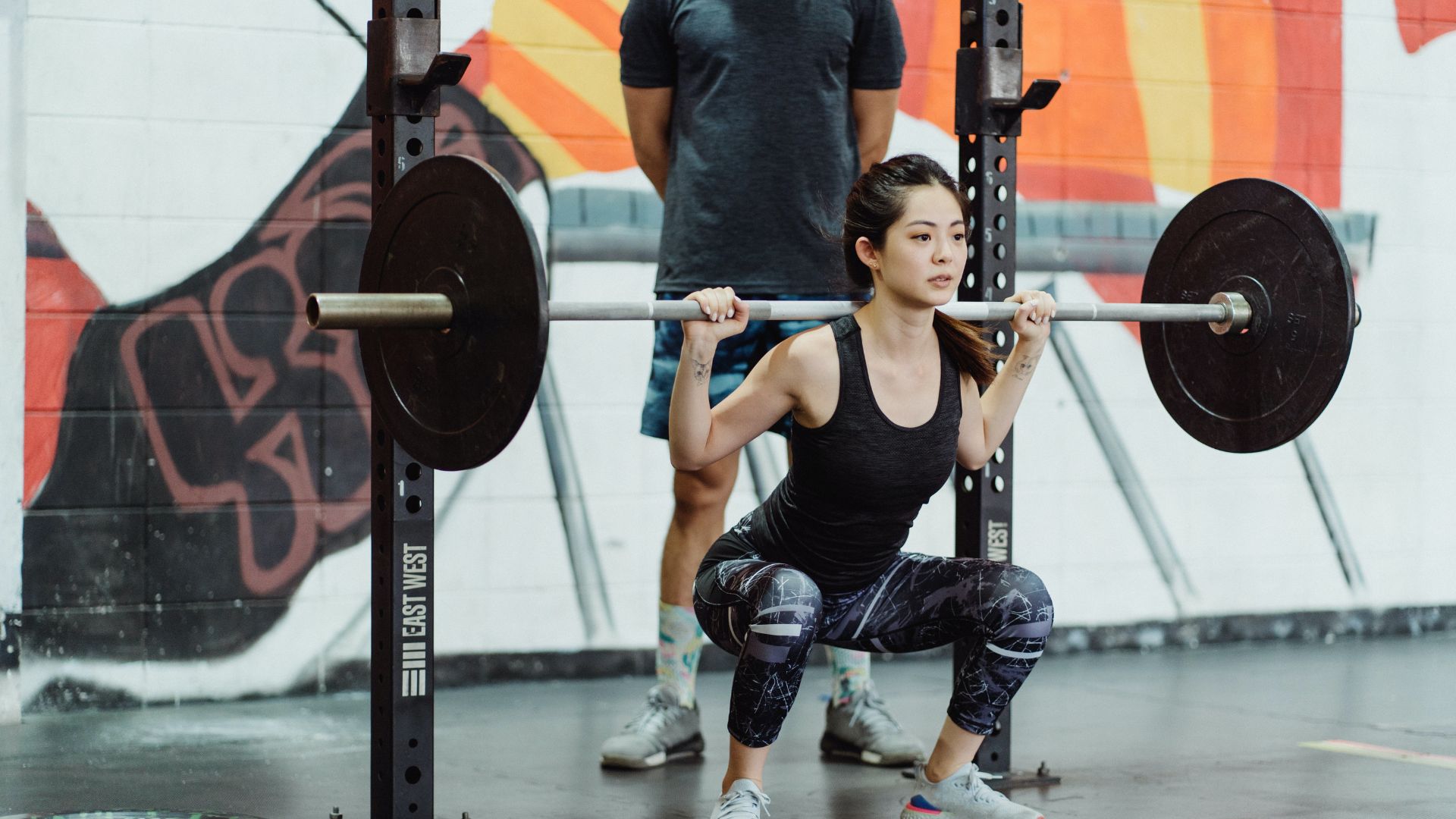Are you new to squatting and wondering how much weight you should lift if you weigh 100 pounds? You are not alone!
Squats are a compound exercise that engages multiple muscles, including the quads, hamstrings, glutes, and core.
They are an excellent way to build strength and improve overall fitness. However, determining how much weight you should squat can be a bit tricky, especially if you are just starting.
In this guide, we will answer all your questions about squatting and provide you with everything you need to know to get started.
The amount you should be able to squat will depend on various factors such as your fitness level, training experience, and age. However, as a general guideline, a person weighing 100 pounds should be able to squat at least their bodyweight, which is 100 pounds.
If you are new to squatting or strength training, it is advisable to start with a lower weight and gradually increase as your body adapts and becomes stronger. It is also important to use proper form and technique to avoid injury and maximize the benefits of the exercise.
It depends on your fitness level.
The amount of weight you can squat will depend on different factors like your fitness level, age, and experience with squatting.
As a general guideline, if you weigh 100 pounds, you should be able to squat at least your body weight, which is 100 pounds.
However, it’s important to note that your ability to squat may vary based on individual factors.
It’s recommended that beginners start with lighter weights and gradually increase as their strength and technique improve.
Additionally, using proper form and technique is essential for avoiding injury and getting the most out of the exercise.
Here’s a chart table that provides a rough estimate of the amount of weight an individual should be able to squat based on their body weight and fitness level:
| Fitness Level | Body Weight | Squat Weight |
|---|---|---|
| Beginner | 100 lbs | 50-75 lbs |
| Beginner | 150 lbs | 75-115 lbs |
| Beginner | 200 lbs | 100-150 lbs |
| Intermediate | 100 lbs | 85-130 lbs |
| Intermediate | 150 lbs | 130-200 lbs |
| Intermediate | 200 lbs | 170-255 lbs |
| Advanced | 100 lbs | 135-205 lbs |
| Advanced | 150 lbs | 205-315 lbs |
| Advanced | 200 lbs | 270-405 lbs |
Please keep in mind that this is just a general guideline, and the amount of weight an individual can squat may vary based on their individual factors such as age, gender, fitness level, and experience with squatting.

Start with a lower weight and gradually increase.
If you’re new to squatting or strength training, it’s recommended to begin with a lighter weight and gradually increase the weight as your body adapts and becomes stronger.
This gradual progression can help reduce the risk of injury and allow your body to adjust to the new physical demands.
Starting with bodyweight squats or using lighter weights can help you focus on proper form and technique.
As you become more comfortable with the exercise, you can increase the weight or resistance to continue challenging your muscles and making progress. Remember to listen to your body and only increase the weight when you feel ready and confident.
here’s a chart table that outlines a general progression for increasing weight when squatting:
| Week | Sets x Reps | Weight (lbs) |
|---|---|---|
| 1-2 | 3×10 | Bodyweight or light dumbbells (5-10 lbs) |
| 3-4 | 3×8 | Dumbbells (10-15 lbs) |
| 5-6 | 4×6 | Barbell (20-30 lbs) |
| 7-8 | 5×5 | Barbell (30-40 lbs) |
| 9-10 | 5×3 | Barbell (40-50 lbs) |
Please keep in mind that this is just a general progression, and the amount of weight and sets/reps you do may vary based on your individual factors such as fitness level, age, and experience with squatting. It’s important to always listen to your body and progress at a pace that feels comfortable and safe for you.
Use proper form and technique.
Using proper form and technique when squatting is crucial to avoid injury and maximize the benefits of the exercise. Some key points to keep in mind include:
- Stand with your feet shoulder-width apart and your toes pointing slightly outward.
- Keep your chest up, shoulders back, and core engaged throughout the movement.
- Lower your body by bending at the hips and knees, keeping your weight on your heels.
- Keep your knees in line with your toes, and don’t let them collapse inward.
- Lower your body until your thighs are parallel to the ground, or as far as you can go while maintaining proper form.
- Push through your heels and extend your hips and knees to return to the starting position.
It’s also essential to breathe correctly during the exercise, inhaling as you lower your body and exhaling as you stand back up.
By using proper form and technique, you can reduce your risk of injury and get the most out of your squatting exercise.
Here’s a chart table summarizing the key points of proper form and technique when squatting:
| Step | Form Tips |
|---|---|
| Stance | Feet shoulder-width apart, toes pointing slightly outward |
| Upper Body | Chest up, shoulders back, core engaged |
| Lower Body | Bend at hips and knees, weight on heels, knees in line with toes |
| Depth | Lower body until thighs are parallel to ground or as far as you can go while maintaining proper form |
| Pushing Up | Push through heels, extend hips and knees to return to starting position |
| Breathing | Inhale as you lower your body, exhale as you stand back up |
Remember to start with a lighter weight and gradually increase as you become more comfortable with the exercise.
Always listen to your body, and if you experience any pain or discomfort, stop and adjust your form or weight accordingly.
Here’s the tabular format for you:
| Topic | Information |
|---|---|
| Bodyweight | A person weighing 100 pounds should be able to squat at least their body weight, which is 100 pounds. |
| Beginner’s Guide | Start with lighter weights and gradually increase weight as your body adapts and becomes stronger. Focus on proper form and technique to avoid injury. |
| Proper Form | Stand with feet shoulder-width apart, toes pointing slightly outward. Keep chest up, shoulders back, and core engaged. Lower body by bending hips and knees, keeping weight on heels. Keep knees in line with toes, don’t let them collapse inward. Lower body until thighs are parallel to ground. Push through heels and extend hips and knees to return to starting position. |
| Breathing | Inhale as you lower your body, exhale as you stand back up. |
| Benefits | Squatting can help build strength and endurance in lower body muscles. |
Conclusion
In summary, the amount of weight a person should be able to squat can vary based on various factors such as their fitness level, age, and experience with squatting.
However, as a general guideline, a person weighing 100 pounds should be able to squat at least their body weight, which is 100 pounds.
For beginners, it’s advisable to start with lighter weights and gradually increase the weight as their body adapts and becomes stronger.
Proper form and technique are also crucial to avoid injury and maximize the benefits of the exercise.
By using correct form, gradually increasing the weight, and listening to your body, you can safely and effectively incorporate squats into your workout routine to build strength and endurance in your lower body.

Hey there, it’s Mike Rrsq, the Editor-in-Chief over at Jsquat.com, and I’m absolutely obsessed with all things squat fitness! I’ve been lucky enough to get some serious recognition for my work in this field. With a solid background in the fitness and wellness industry, I’ve been there right from the get-go, helping shape this website into what it is today.
You see, I’m not just the boss around here; I’m also a passionate contributor. I love sharing my insights through my articles, and trust me, they’re not your run-of-the-mill stuff. Each piece I write is a labor of love, filled with my expertise and real-world experience in the fitness universe. So, if you’re into fitness and looking for some inspiration, you’re in the right place!

